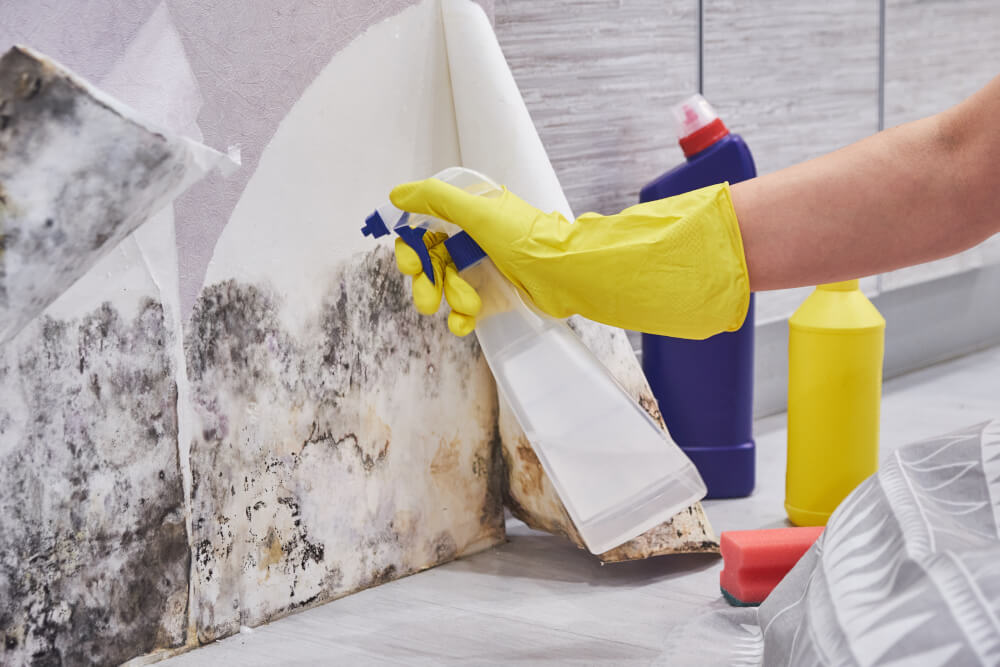During the colder months, limited ventilation and efforts to keep energy bills low can create an ideal environment for mould growth. Over the past year, searches for “how to get rid of mould in bedrooms” have surged by 450%, with “drying” ranking as the most popular related topic, seeing a 5000% increase in search interest.
In light of this, London House Clearing Company Rainbow Rubbish Removals have provided seven expert tips to prevent mould build-up in the home this winter to keep your house clean and safe.
Seven tips to fight mould in your home this winter:
- Burp your rooms
Mould spores need warmth and moisture to grow, thrive and take over a home. If it is cool and dry outside, opening a window – known as ‘burping’ a room – helps release dangerous spores and mycotoxin buildup, especially around surfaces such as window panes where mould expands quickly.
Whilst it may be too cold this winter to have all windows open constantly, try opening windows on opposite sides of your home for at least 10 minutes every morning to allow moisture to be taken out of your home. If your windows have trickle vents, you should aim to leave them open year-round.
- Declutter for freedom
Decluttering can help prevent issues such as dust, mould and mildew – all of which can be hidden underneath piles of clutter. November is the perfect time to reconsider those larger items that never get used – from old leaky dryers to airflow-blocking sofas, letting go of the old can help freshen up your space and prevent moisture build-up.
Ensuring you live in an organised, clean space will promote quality airflow and reduce humidity levels as the removed items will encourage air to circulate freely, keep surfaces dry and reduce trapped moisture, minimising the conditions mould needs to grow.
- Keep an eye on plants
Overwatering or poor drainage in plant pots can lead to a build up of water in the soil creating a damp environment for mould to bloom. The effect of fallen leaves or dead roots can decompose and contribute to humidity in the home.
To prevent the risk of mould, using plant pots with drainage holes and placing saucers beneath to catch excess water is a great way to prevent rotting plants. Remember to also regularly inspect and remove any dead elements to control moisture levels and reduce potential for mould growth.
- Regularly clean carpets
Rooms without hard wood floors are often affected by mould the most, with dust mites, dirt, hair and fungus all potentially creating a home in your carpet. These can aggravate breathing conditions, whilst causing bad smells to run through your home and lower the air quality.
Whether your entire home is carpeted, or only certain rooms, it is key to thoroughly clean them regularly and keep the space well ventilated to bring humidity down.
- Dry clothes outside
Although it may seem the easier option, drying clothes on radiators and in the home can create condensation and prevent your heating system from working efficiently.
One load of washing can hold over two litres of moisture which will soon fill a room creating a humid environment promoting mould development. Where possible hang your wet clothes outside or near an open window for ventilation to keep both the home and its residents safe from mould exposure during the colder months.
- Up the temperature
Whilst households across the UK will be trying to save on heating and energy costs, one of the best techniques to prevent mould growth is by keeping your heating on. The heat helps warm surfaces and walls that in turn, prevents any water condensing.
To prevent mould growth, homes should be heated to at least 16 degrees celsius, and no lower than 14 degrees. Cold rooms attract moisture, allowing mould spores to survive and thrive throughout the home.
- Close your doors
Keeping doors closed in moisture-prone rooms, such as the bathroom or kitchen, can control humidity and will limit airflow to help avoid mould growth. It will limit the spread of moisture and mould spores into other parts of the house, reducing condensation on surfaces and allowing ventilation systems to work effectively.
Whether you are showering, bathing, boiling a kettle or cooking on the stove, keeping doors closed during these tasks is a simple way to minimise the risk of growth, especially on the ceilings where air rises.
Miroslav Radov, owner of London House Clearing Company Rainbow Rubbish Removals commented:
“With November bringing increased dampness to the UK, maintaining a clean and decluttered home is crucial in the fight against mould. A tidy, organised space not only improves air circulation but also minimises areas where moisture can linger, creating a less hospitable environment for mould growth.
“By staying on top of regular cleaning and ensuring airflow throughout your home, you can proactively reduce the risk of mould taking hold during the colder, wetter months, helping to keep your household healthier and your space more inviting for the festive season.”





